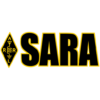This is the second in a series of short reviews of handheld/portable/HT radios. Read more about the series here.
The Yaesu FT-23R / FT-33R / FT-73R series
Just a year or two after the Icom IC-2AT came out, Yaesu introduced a series of 3 monoband radios that covered the 144, 220, and 440 MHz bands in the 1990’s. These were one of the first handheld radios on the market that had an actual CPU, and it included 10 memories, several scan modes, priority scan, and a digital display. By 2018 standards, the features are weak, but these small, sturdy radios are very useful in 2018 if the proper options are installed and new replacement batteries are installed.
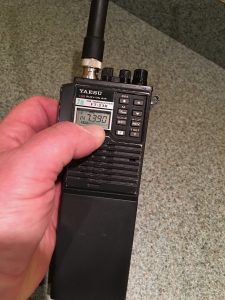
The series did not include built-in CTCSS encode or decode, but it was available as another user-installable option. If you are looking for a used radio in this series, it’s important to get one with the CTCSS board installed. You’ll find it under a metal cover where the battery slides onto the radio.
RF output on these radios were between 2W and 5W depending on which battery is attached. Each of the radios are made with a cast metal case, and originally came with sturdy metal belt clip.
Because of the age of this radio, any original NiCad batteries are certainly gone. But NiCad and even NiMH batteries are available on eBay and from various vendors online. Many of these radios on the used market also have dirty volume and squelch pots, PTT button, and sometimes dirty contacts on the LCD display. All of these issues can be taken care of with some contact cleaner, and in the case of the LCD display by disassembling the front of the radio and carefully cleaning the contacts on the display.
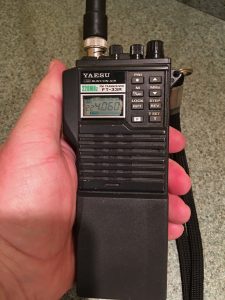
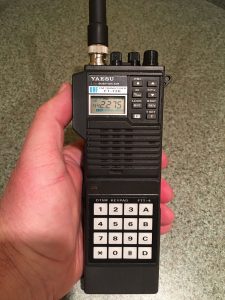
The entire series uses interchangeable batteries, car chargers, and speaker-mics. None of the radios came with standard DTMF keypads, but the optional FTT-4 module added a full 16 character DTMF pad, along with adding almost an inch to the height of the radio as well.
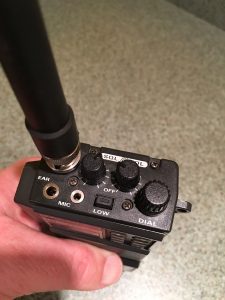
Pros:
- Some modern features like scan and memories, without feature-bloat make this radio very easy to operate. These radios are not programmable with a computer, but operation is simple enough that a computer isn’t necessary.
- Nice, big BNC connector for the antenna
- Very sturdy metal case and real metal belt clip.
- Zero surface mounted components and a simple design – easily repairable with standard electronic tools and parts that are still mostly available even in 2018.
Cons:
- May require maintenance on volume, squelch, PTT, and front panel buttons, along with
- No DTMF keys or CTCSS encode or decode are built-in, but are often installed on used radios.
- Used versions will require replacement batteries, which are available in the aftermarket for reasonable prices.
Conclusion:
While these radios are over 25 years old in 2018, they’re still very viable and usable in today’s world as long as they have the optional CTCSS encode/decode board. All three bands (2m, 220, and 440) operate the same way and have solid performance. I use these radios for QSO’s on local repeaters and would recommend one for anyone if you can find one at a reasonable price online. You can get a newer Chinese radio for the same or less money, but these sturdy older rigs have consistent performance and a sturdy feel you can’t get form a newer plastic HT.
